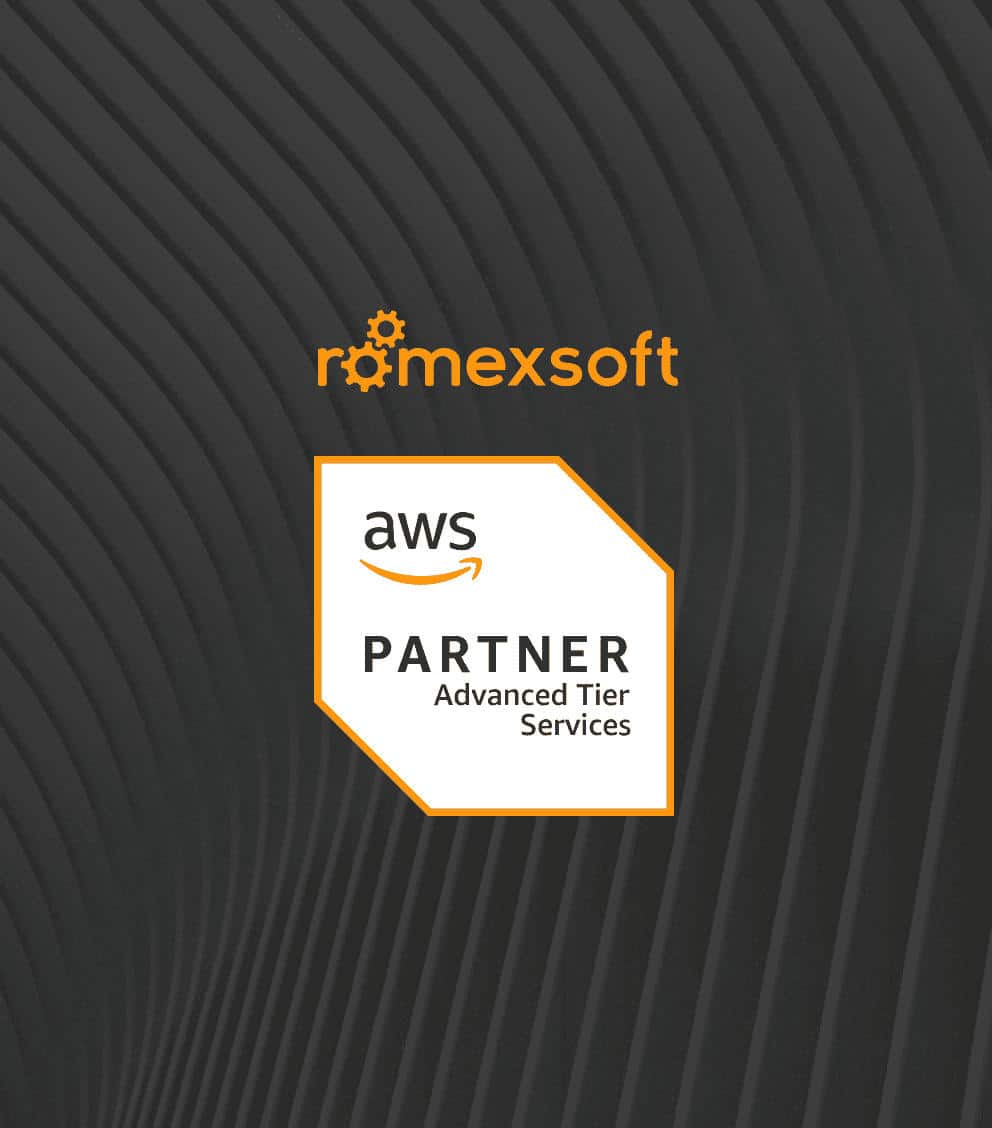How Cloud Security in Healthcare Protects Data
The cost of an average data breach in the healthcare sector exceeds $10.1 million and IBM reports indicate that this number is rising every year. Data from Statista shows that ransomware attacks alone can cost up to $2.57 million for healthcare organizations to recover from. At this point, investing in cloud security must be a priority for business survival.
In this article, we will discuss the main cloud security threats for healthcare businesses and how to protect against them on every level.
The blog discusses:
- meaning of cloud security in healthcare
- core types of security measures in the cloud
- compliance requirements for healthcare data handling
- how healthcare data is protected in the cloud
- main threats to cloud-based healthcare systems
- best practices for healthcare cloud security
- how Romexsoft helps healthcare clients with security

Table of Contents
Healthcare organizations today must adjust to the times and use technology to stay competitive and deliver top-quality patient care. Migrating to the cloud is an essential step in this growth because it offers agility, flexibility, and expands the limits of your service.
However, information becomes more vulnerable in the cloud. Healthcare data, in particular, is extremely sensitive, which makes it a tempting target for cybercriminals. Therefore, you must use robust cloud security features such as encryption, complex access controls, and network protections.
Table of Contents
What Is Cloud Security in Healthcare
Cloud security in healthcare refers to a set of methods used to protect valuable and sensitive data stored in the cloud. As the healthcare domain handles extremely sensitive information, including electronic health records (EHRs), diagnostic images, personal patient data, and communications, ensuring maximum security is paramount.
Effective cloud security systems and practices protect your data, infrastructure, and system as a whole. The most common threats in this domain include:
- Unauthorized access
- Data breach
- Service disruption
- Identity fraud
Most importantly, due to the sensitive nature of healthcare data, effective cloud security impacts the safety of patients directly. It’s also a vital component of facility accreditation because this system uses automated tools to ensure compliance with relevant legal regulations, such as HIPAA, GDPR, etc.
Building reliable cloud security will provide healthcare organizations with the following:
- Patient privacy and personal data protection
You protect patient data and confidentiality using advanced encryption. It’s a crucial step to defend against fraud and identity theft. - Compliance with legal and healthcare regulations
Healthcare businesses and organizations must comply with multiple laws and regulations. Using specialized CSPM tools helps ensure compliance and monitor changes in regulations to stay up-to-date. - Reliable operational continuity and patient safety
Any disruptions in critical care can result in loss of life. Secure cloud environments reduce the risk of such disruptions, thereby protecting not only the systems but also patients’ lives. - Secure collaboration across multiple stakeholders
Cloud systems allow for effortless collaboration among stakeholders operating from any location. For example, pharmacies, labs, insurers, and healthcare providers can all access patient data at any time.
Types of Cloud Security in Healthcare
The cloud requires a multi-layered security system that protects each domain separately and creates a coherent network to integrate all of them.
Data Security
Healthcare businesses have access to patients’ personal data, lab results, and Electronic Health Records (EHRs), which must be kept private under law. Therefore, the primary goal of any healthcare security system is to protect this information. Mechanisms used to achieve data security include:
- Data encryption
- Leak prevention practices
- Data classification
- Backup and recovery plans
Highly secure cloud environments, like Amazon Bedrock, have built-in data residency and isolation policies. Those protect your data both while it’s in transit and at rest. Healthcare providers can use this to stay compliant with relevant data security requirements.
Network Security
Cloud security in healthcare is not only about protecting data. Network security is just as important because it ensures the safety of the infrastructure used to run various services. Some of the methods used to reduce harmful traffic include:
- Installing firewalls
- Using private networks
- System microsegmentation
- Threat detection and monitoring
The primary task of cloud security is to monitor continuously and identify and neutralize attacks as early as possible. One of the most effective defenses is to adopt zero-trust security policies. It means that you build a system that checks who is using it, from where, and for what, with every access. In healthcare, any disruption can have dangerous consequences for patients’ health and safety. Therefore, building a resilient and secure network must be your priority.
Identity and Access Management
Identity and Access Management (IAM) controls who can access and use what data within the cloud security system. It allows doctors, nurses, and techs to use the tools they need while restricting their access to any information beyond their privileges. For example, a nurse can see patient data but not the system settings. In order to be effective, IAM controls must:
- Have a clear set of rules and policies
- Use IAM Analyzer Access or a different validation tool
- Have clearly defined access boundaries
Your IAM policies must align with internal security standards and comply with relevant legal guidelines. You also should review them regularly to ensure continuous compliance and reduce the risk of data exposure.
Compliance and Risk Management
Using cloud systems helps healthcare providers ensure compliance with relevant privacy and security laws, like GDPR, HITECH, and HIPAA. For example, AWS offers a shared responsibility model. It means that AWS is responsible for the security of the cloud, while your organization is responsible for how you use the platform. Some other AWS tools you can benefit from include:
- AWS Security Hub for ensuring compliance with CIS and NIST
- XDR solutions for faster incident detection and response
- CSPM platforms for continuous environment monitoring
Evaluate the platform’s security capabilities and compliance features to understand which option is most advantageous for you.
Cloud Security Compliance for Healthcare
Compliance with legal frameworks is a mandatory consideration for any healthcare cloud security system. Some cloud platforms help healthcare providers by offering built-in compliance features. For example, AWS has Business Associate Addendum (BAA) legal agreements and provides access to 130 eligible services for storing and processing patient data that allow you to maintain HIPAA compliance.
However, the responsibility for compliance ultimately lies with the healthcare organization. Therefore, you must build a system that ensures data security under legal regulations in your area of operation.
Key legal frameworks and regulations that healthcare businesses work with include:
- HIPAA and HITECH (US)
Any healthcare business operating within the US must comply with these fundamental laws when handling Protected Health Information (PHI). They provide guidance on how this data must be used, accessed, disclosed, encrypted, and audited. HITECH, in particular, outlines enforcement mechanisms and breach notification mandates. - GDPR (EU)
GDPR is not a healthcare-specific set of laws. However, it applies to all organizations that handle personal data of EU citizens. It governs data consent, processing rights, access rights, and international data transfers. - Regional Laws (location-specific)
These can vary depending on where you operate. For example, there are PIPEDA and PHIPA regulations in Canada, HDS in France, APPI in Japan, and PDPA in Singapore. You should always research relevant laws in your areas of operation and ensure your data security measures are compliant. - Inherited Compliance Certifications (via AWS)
When using AWS, healthcare organizations can ‘inherit’ general compliance certifications the platform holds. They allow you to validate cloud infrastructure security to meet regulatory and audit requirements. AWS certificates include SOC 1/2/3, ISO 9001/27001/27017/27018, and PCI DSS Level 1.
Industry-Specific Frameworks and Certifications
Healthcare organizations must comply not only with legal regulations of different countries and international law but also follow industry-specific frameworks, such as:
- HITRUST CSF
The HITRUST Common Security Framework is a unified structure that integrates legal regulations, like HITECH, and PCI DSS. Having a certificate of compliance with this framework proves that the organization is proactive in its security management. For example, AWS services are certified under the HITRUST CSF Assurance Program. - NIST Frameworks
The NIST Cybersecurity Framework and Incident Response Lifecycle are commonly used in the US healthcare sector. Your compliance with NIST indicates that your business supports proactive and reactive measures of threat detection and management. - FedRAMP
Compliance with this framework is mandatory for any cloud environment used by federal agencies in the US. For example, this includes the Department of Health and Human Services. If you are a government-aligned healthcare business, consider using AWS, as it holds FedRAMP authorizations.
How Healthcare Data Is Protected in the Cloud
Building effective cloud security for healthcare requires creating a multi-layered system to safeguard your organization and data from every angle. The specifics may vary, but the general structure of such systems should include the following components:
- Shared Responsibility Model
A shared responsibility model means that the cloud computing service provider ensures the security of their infrastructure (hardware, networking, and data centers). Meanwhile, healthcare providers that use cloud technology are responsible for securing their own applications, configurations, and data they manage within the cloud. - Data Encryption
To ensure maximum protection, sensitive health data is encrypted both during storage and transmission. This way, only people with decryption keys can access the information at any point. Additional measures for data security in the cloud include backup and recovery protocols. In simple words, data backups are stored in protected areas to ensure fast recovery in case of breaches or outages. - Access Control
Identity and Access Management systems use multi-factor authentication, single sign-on, and role-based permissions to ensure only authorized users can access the data. Moreover, cloud security should also include User Behavior Analytics tools to monitor the system continuously and manage insider threats in real-time. - Network Security
Common network security measures include firewalls, intrusion detection systems, and Secure Access Service Edge (SASE). In general, the goal is to build a multi-layered defense that monitors for intruders and breaches on every level. The safest approach is to establish zero-trust access across distributed environments. - Compliance Monitoring
Cloud Security Posture Management (CSPM) tools help automate compliance with legal regulations and security frameworks. They scan cloud environments continuously to identify any misconfigurations and security risks. In essence, they perform automated auditing for relevant regulatory compliance.
Zero-trust architecture is essential to reduce vulnerabilities by continuous monitoring and verification of user rights and device health. Meanwhile, DevSecOps is the first line of an effective defense. This service makes security a part of the software development lifecycle. Therefore, it allows to prevent vulnerabilities before the application is deployed.
Critical Risks Facing Cloud-Based Healthcare Systems
Migrating to the cloud makes healthcare businesses more flexible, scalable, and efficient. However, this comes at the cost of some additional risks, especially to information security. The most common threats you will face when operating in the cloud include:
Ransomware Attacks
Ransomware attacks occur when offenders encrypt healthcare organizations’ data and demand payment for its release. In recent years, the number of such attacks on the healthcare sector has increased by 278%. Due to the sensitivity of the data and danger to patients, many organizations feel compelled to pay the ransom as soon as possible. However, even making the payment doesn’t guarantee that the information will be released and untampered.
The most effective defense against ransomware attacks includes:
- Data backups
- Strict access controls
- Real-time monitoring
- Robust incident response.
Data Breaches and Theft
Data breaches are one of the biggest threats to the healthcare sector because they result in immeasurable damage. According to reports reviewed by the Human Services Office for Civil Rights and published in the HIPAA Journal, over 133 million healthcare records were exposed due to data breaches in a single year. As a result of such incidents, the attackers receive access to medical histories, billing details, and personal identifiers. They can sell this information or use it for identity fraud and other offenses. Therefore, it’s impossible to calculate the exact measure of loss and damage a data breach might cause.
Reliable defenses against such threats must consist of:
- Strong data encryption
- Strict IAM policies
- Regular risk assessments.
Sensitivity of Protected Health Information
The sensitivity of PHI (Protected Health Information) is a threat in itself. This information includes demographic details, diagnoses, and treatments, which make it a high-value target. As data moves constantly in the cloud, it’s more vulnerable to attacks. Therefore, ensuring its safety is not just a moral obligation but a legal requirement for any healthcare organization.
The most effective way to protect PHI requires a complex approach to secure the data through:
- Strong encryption both in transit and at rest
- Tightly controlled access for any agent
- Logging and monitoring every interaction with the data.
Compliance and Regulatory Complexity
Healthcare organizations worldwide must adhere to strict regulatory standards such as HIPAA and HITECH. If the organization operates in several locations or countries, it must follow local and international laws in every region. Working with trusted cloud providers, like AWS, makes this compliance easier because they offer legal agreements and verified services eligible for the healthcare sector.
However, the organization itself always takes primary responsibility for its cloud security compliance and can benefit from using:
- Automated monitoring tools
- Detailed audit trails
- Alignment with security frameworks.
Legacy Systems and Outdated Devices
Healthcare providers often use legacy systems and equipment that create multiple vulnerabilities. For example, MRI machines and diagnostic devices might have outdated software that cannot be integrated into a contemporary information security system. Some organizations even use non-digital systems, like fax machines. These create additional physical entry points for attackers.
To ensure cloud security in healthcare while using legacy systems you should:
- Implement careful data segmentation
- Design strict network policies
- Modernize the system where possible.
Cloud Misconfigurations
Cloud misconfiguration is very common but hard to detect. However, this threat is rather easy to prevent by partnering with a reliable provider to build and manage your system. Even the slightest error in configuration can lead to huge financial losses, reputational damage, and endanger patients.
Here is what you can do to minimize these risks in cloud security systems:
- Use CSPM tools
- Automate policy enforcement
- Conduct regular compliance checks.
Data Supply Chain Vulnerabilities
Healthcare businesses work with third-party vendors, such as telehealth platforms, EHR providers, and AI diagnostic tools. These collaborations create points of connection, like APIs, shared services, or cloud connectors. They become additional vulnerabilities in your own system, and you face risks if the third-party agent doesn’t have strong enough defenses.
The most effective ways to mitigate these risks include:
- Establishing clear contractual security requirements
- Conducting third-party risk assessments
- Applying zero-trust principles to external integrations.
Best Practices of Cloud Security in Healthcare
Using cloud technology to modernize healthcare infrastructure is now a mandatory requirement to stay competitive. However, you must never forget that cloud security demands a proactive approach. Simply put, you must prepare for threats before they hit, or the damage to your business might be irreparable. Below, we outline how to build and maintain a scalable, resilient, and compliant cloud-based system for healthcare.
Understand and Embrace Shared Responsibility
When migrating to the cloud, ensure you understand the shared responsibility model and compliance requirements that your organization must meet. Research region-specific laws, such as PIPEDA or PDPA, as well as industry-specific regulations, like HITRUST or ISO 27001.
Do not forget that the shared responsibility model means that the cloud service provider secures the infrastructure of the cloud, but you are accountable for security in the cloud. Therefore, maintaining application and configuration security, managing user access, and PHI governance are your responsibilities.
Encrypt Data, Monitor Usage, and Implement Backups
Data protection and encryption must be your priority at all times. Use the AES-256 protocol for encrypting data at rest, and TLS 1.2+ for data in transit. In addition, implement cloud-native tools such as key rotation, data residency controls, and encryption policy enforcement to build layered cloud security.
Meanwhile, develop a robust disaster recovery strategy to mitigate damage from possible outages or ransomware attacks. It must include storing encrypted data backups in safe, distributed locations and running regular drills to ensure smooth and fast recovery in an emergency.
Develop an IAM Strategy and Control Access
Access control is your first line of defense. Therefore, you should develop an efficient IAM strategy based on the principle of least privilege. For higher security, enforce multi-factor authentication and enable single sign-on for all healthcare personnel.
You need to not only establish policies but also monitor their use. Therefore, use IAM Access Analyzer for continuous monitoring and access permission validation. Update account privileges as needed to minimize the risk of creating accounts with over-privileged access.
Audit Continuously and Manage Cloud Security Posture
Conduct regular audits to maintain a secure and compliant cloud environment. Using services like AWS Security Hub and Amazon Security Lake allows you to aggregate logs, audit trails, and threat intelligence, creating a centralized view of your cloud security landscape.
Meanwhile, implement CSPM tools to manage your cloud security posture and automate multiple security checks. These are necessary to detect any drift from compliance baselines quickly and take immediate action.
Detect Threats and Automate Responses
How you monitor and respond to threats in real time defines effective cloud security in healthcare. Therefore, use Extended Detection and Response (XDR) platforms, SIEM integration, and automated incident response workflows to achieve this.
Integrate with AWS Security Hub, AWS WAF, EventBridge, or similar platforms to mitigate threats across hybrid and multi-cloud environments.
Train Staff and Raise Awareness
Human error is one of the most common causes of breaches. Therefore, healthcare providers should build a security-first culture in their organizations. Achieve this through training your staff, from clinicians to IT administrators and external contractors. Teach them secure data handling, phishing awareness, and proper access protocols.
Meanwhile, establish clear security policies and run drills. You should simulate attacks in training to teach staff how to react to them in real-time. Keep these programs up-to-date to account for evolving threats.
Secure Apps and Enforce AI Controls
As more healthcare organizations today use third-party applications and AI/ML models, it’s critical to ensure application-level security. Achieve this by using input validation, secure API gateways, and runtime threat detection.
Apply tools like Amazon Bedrock Guardrails when using generative AI models to filter harmful content, detect PII, comply with privacy laws, and enforce responsible AI use.
Automate, Go Cloud-Native, and Adopt Zero Trust
To scale your security, you should embrace automation whenever possible. With the current level of technology, you can effectively automate vulnerability scans, misconfiguration detection, and policy enforcement. Automation will allow you to maintain control of the system while increasing the agility of incident response and prevention.
In addition, you should adopt zero-trust policies. It means that every access must be verified regardless of its origin. This verification must validate access based on identity check, context, and device posture to ensure maximum security.
How Can Romexsoft Help with Cloud Security
As an AWS Advanced Tier Services Partner, Romexsoft has significant experience in developing secure, cloud-based software for healthcare organizations.
Here is what Romexsoft can offer you in terms of cloud security:
- Design Secure and Compliant Architecture
We will design a cloud-native architecture using HIPAA-compliant AWS services eligible under all common laws and frameworks. We focus on data isolation, encryption, and access control as they are top concerns for the healthcare sector. As a result, unidentified and unauthorized persons do not have access to sensitive data. - Regulatory Compliance and Access Control Implementation
We will manage AWS Business Associate Addendums and integrate automated tools that allow you to maintain compliance across relevant legal frameworks. We will also implement Identity and Access Management strategies that use multi-factor verifications and role-based permissions for maximum cloud security. - DevSecOps Integration for Application Security
At Romexsoft, we prioritize security and ensure it’s part of the product development lifecycle via employing best DevSecOps practices at every stage from development to release. We believe in reducing risks from the start. Therefore, we protect applications before they are deployed by configuring secure CI/CD pipelines and automating vulnerability scans. - Threat Monitoring and Automated Incident Response
We implement WAF, CloudWatch, Security Hub, EventBridge, and GuardDuty as part of a unified monitoring and protection framework. In this setup, AWS WAF automatically filters and blocks harmful web requests, while the other services collect telemetry, trigger response workflows, and continuously optimize security configurations. - Backup, Disaster Recovery, and Business Continuity Planning
We use encrypted and geo-redundant backups to protect your data and allow for fast recovery. Romexsoft delivers resilient cloud-based systems and develops recovery plans to restore your data and infrastructure in case of critical failures or attacks. - Continuous Security Optimization and Team Support
Romexsoft can provide posture assessments, configuration reviews, and regular testing to help you maintain system security after deployment. In addition, we provide your internal teams with detailed documentation and perform knowledge transfers. This way, the team can grow and manage your cloud environment independently without compromising security.
Cloud Security in Healthcare Q&A
Healthcare providers should track their security posture changes through numbers. Examining these reports will show your progress or alert you to what should be changed.
Mean Time to Detect (MTTD). Tracks average time between a breach or misconfiguration and the first alert.
Mean Time to Respond (MTTR). Tracks average time between an alert and full containment or fix.
Critical Vulnerability Remediation Time. Tracks the median number of days needed to patch identified vulnerabilities (CVEs) rated 7.0 or higher.
Configuration Drift Rate. Calculates the percentage of cloud assets that deviate from approved baselines.
Encryption Coverage. Calculates the percentage of data encrypted using AES-256 at rest and TLS 1.2+ in transit.
MFA Adoption. Calculates the percentage of user (human) and machine identities protected by multi-factor authentication.
Phishing Susceptibility Rate. Calculates the percentage of users who interact with links during phishing simulations.
Compliance Pass Rate. Calculates the percentage of security controls that can successfully meet automated checks for relevant frameworks, such as HITRUST.
Ensuring the security and privacy of sensitive data is the biggest concern when using cloud computing in healthcare. If a breach occurs, healthcare organizations could face severe legal and financial repercussions. To prevent this, you must implement robust cloud security measures and ongoing monitoring. Partner with an experienced software development company that can build a secure infrastructure to protect your patient data in the cloud.
Cloud security has a direct impact on how healthcare data is accessed and shared. With a well-architected security model, you can control who, where, and under what conditions can access sensitive information. Data must be encrypted when you transmit it and at rest to guarantee privacy. Access to it should be role-based to minimize the risk of tampering and theft. You can maximize the efficiency of cloud security in healthcare by implementing cloud-native monitoring, audit logging, and automated policy enforcement.
The main disadvantage of using cloud computing in healthcare is the vulnerability of sensitive data. Due to its high value, this data is a tempting target for cybercriminals. Therefore, healthcare organizations that migrate their services to the cloud often become victims of ransomware attacks and devastating data breaches. These risks can be effectively mitigated by building and implementing a multi-layered cloud security system. This way, healthcare providers can enjoy all the benefits of cloud technology without compromising the security of patient data.





